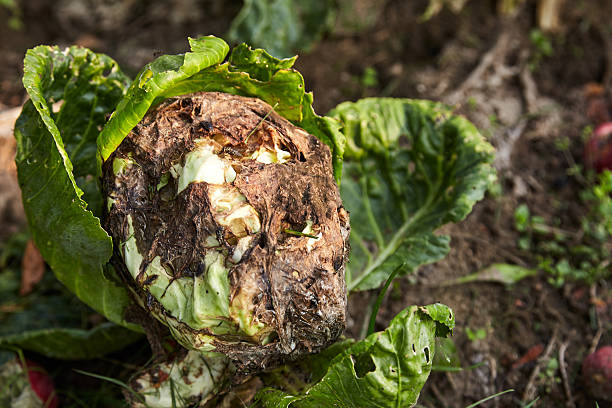Open Primaries and the Future of American Democracy: A Cure for Polarization?
In a time of extreme political polarization, many Americans are searching for structural reforms to tone down partisan extremism, elevate moderate voices, and make democracy more representative. One promising idea that often comes up in these conversations is the concept of open primaries, particularly the "top-two" or "jungle" primary system.
But what exactly are open primaries? Can they reduce polarization in the United States? How many states currently use them, and why haven’t more joined? Could such a system be federally mandated? And what can we learn from global examples?
This post explores the idea of open primaries in depth, analyzing their structure, impact, legal possibilities, and global relevance.
What Are Open Primaries?
Primaries are intra-party elections that determine which candidate will represent a political party in the general election. The primary system can take several forms:
1. Closed Primary
-
Only registered party members can vote in their party’s primary.
-
Example: Only registered Democrats can vote in the Democratic primary.
2. Semi-Closed Primary
-
Allows unaffiliated voters to participate in a party’s primary, but registered party members must vote in their own primary.
3. Open Primary
-
Voters of any affiliation can choose which party’s primary to vote in.
-
However, they may only vote in one party’s primary, not both.
4. Top-Two or Jungle Primary (A Radical Open Primary Variant)
-
All candidates from all parties compete in one primary election.
-
The top two vote-getters, regardless of party, advance to the general election.
-
This means two Democrats or two Republicans could face off in the final round.
The Promise of the Top-Two Open Primary
The top-two system fundamentally changes political incentives. Instead of appealing to just their party’s base, candidates must win over all voters — Democrats, Republicans, independents, and everyone in between — right from the start.
Potential Benefits:
-
Reduces polarization: Candidates must appeal to a broader audience.
-
Weakens the extremes: Far-left or far-right candidates have a harder time advancing.
-
Empowers independents: No more sitting out during closed primaries.
-
Increases competition: Even strong incumbents can be challenged by same-party moderates.
-
Incentivizes coalition-building: Candidates can’t just win with a sliver of the electorate.
Where Is It Used?
In the United States:
-
California and Washington use the top-two primary for most state and congressional races.
-
Alaska uses a top-four ranked choice variation, where the top four finishers from a nonpartisan primary go to the general election and voters rank them.
-
Nebraska uses a nonpartisan legislature with a top-two system.
Other States with Open Primaries:
-
States like Texas, Georgia, Michigan, and Wisconsin have open or semi-open primaries, where voters don’t have to be registered party members to vote in a primary.
But the Majority of States Still Use Closed or Semi-Closed Systems
Why Don’t More States Use Open Primaries?
1. Party Resistance
Political parties — especially at the state level — oppose reforms that dilute their control over candidate selection. They view open primaries as allowing non-party members to hijack the process.
2. Legal and Constitutional Hurdles
Some state constitutions enshrine partisan primaries, requiring voter initiatives or amendments to change the system.
3. Low Public Awareness
Many voters don’t understand how the primary system influences final outcomes. Without education and advocacy, reform efforts fizzle.
4. Incumbent Protection
Closed primaries protect entrenched politicians by shielding them from challenges by centrists or independents.
Can It Be Federally Mandated?
The Constitution gives states broad powers to manage elections. However, under the Elections Clause (Article I, Section 4), Congress has authority over federal elections — including U.S. House and Senate elections.
So yes, Congress could theoretically pass a law requiring all states to adopt open or top-two primaries for federal offices.
However:
-
It would be challenged in court.
-
It would face fierce opposition from parties and states’ rights advocates.
-
It would likely require a filibuster-proof majority in the Senate.
Alternatively, citizen-led ballot initiatives remain the most effective route for state-level reform, especially in states with initiative processes.
Global Comparisons
While the U.S. primary system is unique in scale, a few global examples shed light:
France
-
Two-round system: If no candidate wins a majority in the first round, the top two advance to a runoff — even if both are from the same ideological family.
-
This forces candidates to appeal to a wider base in the second round.
Australia
-
Uses ranked-choice voting in most elections, which encourages moderation and coalition-building.
Germany
-
Parties play a bigger role in candidate selection, but proportional representation ensures multiple voices are heard in parliament — limiting extremism.
Key Insight:
Systems that force candidates to win broader support — whether through top-two, ranked-choice, or coalitions — tend to reward moderation and undermine extremism.
What the Data Says
A growing body of research supports the idea that open primaries — especially nonpartisan ones — lead to:
-
More moderate legislators
-
Higher voter turnout
-
Better representation for independents and centrists
-
Less influence from fringe party bases
But effects are not guaranteed — local political culture still plays a role.
Conclusion: Open Primaries as a Path to Democratic Renewal
American democracy is grappling with hyper-partisanship, disinformation, and voter disillusionment. The closed primary system — where a small number of party loyalists determine who ends up on the general election ballot — fuels many of these problems.
Open primaries — especially the top-two or top-four variants — offer a powerful structural reform. They shift the incentive away from extremism and toward consensus-building. They give independents a voice. They open the door for more civil and pragmatic politics.
While change won’t come easily, the path is clear: state-by-state citizen initiatives, sustained public education, and perhaps one day, a bold move from Congress.
If we want better outcomes, we need better systems. Open primaries could be one of the keys.
#OpenPrimaries #ElectoralReform #TopTwoSystem #FixDemocracy #EndPolarization #LetIndependentsVote
खुला प्राइमरी सिस्टम: क्या यह अमेरिका में ध्रुवीकरण को कम कर सकता है?
अत्यधिक राजनीतिक ध्रुवीकरण के इस दौर में, कई अमेरिकी नागरिक ऐसे संरचनात्मक सुधारों की तलाश में हैं जो चरमपंथ को कम करें, मध्यम विचारों को प्रोत्साहित करें, और लोकतंत्र को अधिक प्रतिनिधिमूलक बनाएं। इन्हीं विचारों में एक प्रचलित प्रस्ताव है — खुला प्राइमरी सिस्टम (Open Primaries), विशेष रूप से टॉप-टू या जंगल प्राइमरी के रूप में।
लेकिन यह खुला प्राइमरी सिस्टम होता क्या है? क्या यह अमेरिका में ध्रुवीकरण को कम कर सकता है? कितने राज्यों में यह प्रणाली लागू है? बाकी राज्यों में क्यों नहीं? क्या इसे संघीय स्तर पर अनिवार्य किया जा सकता है? और क्या हमें इससे अंतरराष्ट्रीय स्तर पर कोई सीख मिलती है?
इस ब्लॉग में हम इन सभी पहलुओं का विश्लेषण करेंगे।
खुला प्राइमरी सिस्टम क्या है?
प्राइमरी चुनाव उस प्रक्रिया को कहते हैं जिसमें राजनीतिक दल यह तय करते हैं कि उनके दल से कौन उम्मीदवार आम चुनाव में खड़ा होगा। यह प्रक्रिया अलग-अलग तरीकों से हो सकती है:
1. बंद प्राइमरी (Closed Primary)
-
केवल उस दल के पंजीकृत सदस्य ही अपने दल की प्राइमरी में वोट डाल सकते हैं।
-
उदाहरण: केवल पंजीकृत डेमोक्रेट्स ही डेमोक्रेटिक प्राइमरी में वोट कर सकते हैं।
2. अर्द्ध-बंद प्राइमरी (Semi-Closed)
-
निर्दलीय (independent) मतदाता किसी भी एक दल की प्राइमरी में वोट कर सकते हैं, लेकिन दल के सदस्य केवल अपने ही दल में।
3. खुली प्राइमरी (Open Primary)
-
कोई भी पंजीकृत मतदाता किसी भी दल की प्राइमरी में वोट कर सकता है, बशर्ते कि वह एक ही दल की प्राइमरी में वोट करे।
4. टॉप-टू या जंगल प्राइमरी (Top-Two or Jungle Primary)
-
सभी दलों के उम्मीदवार एक ही प्राइमरी में हिस्सा लेते हैं।
-
जो दो उम्मीदवार सबसे ज़्यादा वोट पाते हैं, वे आम चुनाव में जाते हैं — भले ही दोनों एक ही दल से क्यों न हों।
टॉप-टू सिस्टम का वादा
टॉप-टू प्रणाली में उम्मीदवारों को केवल अपने दल के मतदाताओं को नहीं, बल्कि सभी नागरिकों को प्रभावित करना होता है — डेमोक्रेट्स, रिपब्लिकन्स, इंडिपेंडेंट्स और अन्य।
संभावित लाभ:
-
राजनीतिक ध्रुवीकरण में कमी
-
चरमपंथी उम्मीदवारों की शक्ति में कमी
-
स्वतंत्र मतदाताओं को अधिक प्रतिनिधित्व
-
प्रतिस्पर्धा में वृद्धि और बेहतर जवाबदेही
-
सामूहिक सहयोग की ओर बढ़ावा
अमेरिका में कहां लागू है यह प्रणाली?
टॉप-टू सिस्टम:
-
कैलिफ़ोर्निया और वॉशिंगटन: टॉप-टू प्रणाली का उपयोग करते हैं।
-
अलास्का: टॉप-फ़ोर रैंक्ड चॉइस वर्ज़न (Top-Four Ranked Choice)
-
नेब्रास्का: गैर-पार्टीगत विधायिका, टॉप-टू प्रणाली के साथ।
अन्य राज्य:
-
टेक्सास, मिशिगन, जॉर्जिया, विस्कॉन्सिन आदि में खुले या अर्द्ध-खुले प्राइमरी सिस्टम हैं।
लेकिन अधिकांश राज्य अब भी बंद या अर्द्ध-बंद प्रणाली का पालन करते हैं।
बाकी राज्यों ने इसे क्यों नहीं अपनाया?
1. राजनीतिक दलों का विरोध
राजनीतिक दल अपने उम्मीदवारों को खुद चुनने की शक्ति नहीं छोड़ना चाहते। वे मानते हैं कि खुली प्राइमरी में बाहरी मतदाता प्रक्रिया को "हाईजैक" कर सकते हैं।
2. संवैधानिक जटिलताएं
कुछ राज्यों में पार्टी-आधारित प्राइमरी व्यवस्था संविधान में दर्ज है। इसे बदलने के लिए जनमत संग्रह या संवैधानिक संशोधन चाहिए।
3. जनजागरूकता की कमी
बहुत से मतदाताओं को यह पता ही नहीं होता कि प्राइमरी सिस्टम के कारण आम चुनावों में सीमित विकल्प ही रह जाते हैं।
4. सत्ता में बैठे नेताओं को लाभ
बंद प्राइमरी सिस्टम मौजूदा नेताओं की स्थिति को सुरक्षित करता है और उन्हें मध्यपंथियों से चुनौती से बचाता है।
क्या इसे संघीय स्तर पर अनिवार्य किया जा सकता है?
संविधान के Elections Clause (Article I, Section 4) के अनुसार, कांग्रेस को संघीय चुनावों के नियम तय करने का अधिकार है — यानी हाउस और सीनेट के चुनावों के लिए।
इसका अर्थ है कि हां, कांग्रेस ऐसा कानून बना सकती है जिससे सभी राज्यों में संघीय चुनावों के लिए खुली या टॉप-टू प्राइमरी प्रणाली लागू हो सके।
हालांकि:
-
इसे कोर्ट में चुनौती दी जा सकती है।
-
राजनीतिक दलों और राज्यों से तीव्र विरोध होगा।
-
इसके लिए सीनेट में फिलिबस्टर-प्रूफ बहुमत की आवश्यकता होगी।
इसलिए राज्य स्तर पर नागरिक पहलों के माध्यम से बदलाव अधिक प्रभावी और व्यावहारिक हैं।
अंतरराष्ट्रीय उदाहरण
हालांकि अमेरिका का प्राइमरी सिस्टम वैश्विक स्तर पर अद्वितीय है, फिर भी हम कुछ देशों से प्रेरणा ले सकते हैं:
फ्रांस
-
दो-चरणीय चुनाव प्रणाली: यदि कोई उम्मीदवार पहले चरण में बहुमत नहीं पाता, तो शीर्ष दो में आमना-सामना होता है — चाहे दोनों एक विचारधारा से हों।
ऑस्ट्रेलिया
-
रैंक्ड चॉइस वोटिंग प्रणाली अपनाई जाती है, जिससे मध्यमार्गी उम्मीदवारों को बढ़त मिलती है।
जर्मनी
-
पार्टी-आधारित उम्मीदवार चयन, लेकिन अनुपातिक प्रतिनिधित्व (proportional representation) के कारण संसद में विविध विचार शामिल होते हैं।
निष्कर्ष:
जिन प्रणालियों में उम्मीदवारों को व्यापक समर्थन की आवश्यकता होती है, वे चरमपंथ को हतोत्साहित करती हैं और मध्यम मार्ग को बढ़ावा देती हैं।
आंकड़ों से क्या पता चलता है?
शोध से यह संकेत मिलता है कि खुली और गैर-पार्टीगत प्राइमरी प्रणाली:
-
अधिक मध्यम उम्मीदवारों को चुनने में मदद करती है
-
मतदाता भागीदारी बढ़ाती है
-
स्वतंत्र मतदाताओं को सशक्त करती है
-
चरमपंथी विचारों को कमजोर करती है
हालांकि, इन परिणामों की गारंटी नहीं होती — स्थानीय राजनीतिक संस्कृति भी महत्वपूर्ण भूमिका निभाती है।
निष्कर्ष: लोकतंत्र को नया जीवन दे सकता है खुला प्राइमरी सिस्टम
अमेरिकी लोकतंत्र आज ध्रुवीकरण, अविश्वास और निराशा से जूझ रहा है। बंद प्राइमरी सिस्टम इसमें योगदान देता है, क्योंकि यह पूरे मतदाता वर्ग की बजाय केवल पार्टी समर्थकों की आवाज़ को महत्व देता है।
खुला प्राइमरी सिस्टम, विशेष रूप से टॉप-टू या टॉप-फोर मॉडल, एक ऐसा संरचनात्मक सुधार है जो संवाद, सहयोग और मध्यम विचारों को प्रोत्साहित करता है।
बदलाव आसान नहीं होगा — लेकिन यदि हम बेहतर राजनीति चाहते हैं, तो हमें बेहतर चुनावी प्रणालियां बनानी होंगी।
#खुला_प्राइमरी
#चुनावी_सुधार
#ध्रुवीकरण_का_अंत
#लोकतंत्र_को_बचाएं
#LetIndependentsVote
#TopTwoSystem
10/
— Paramendra Kumar Bhagat (@paramendra) July 21, 2025
The revolution won’t be televised.
But it might trend.
Want:
✅ Open elections
✅ Fair maps
✅ Real UN
✅ Tax justice
✅ People-first policies?
Then amplify this. Let’s make democracy go viral. 📢🔥 @Alyssa_Milano @ezraklein



%20H16-57.jpg)



